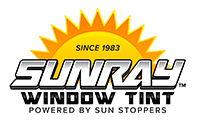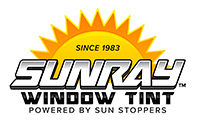Window Tint Percentage Laws in The US By State
Window Tint Percentage Laws in The US By State
Window Films are one of the most popular car upgrades for many drivers today, especially in Texas. Modern car windows are treated using a special polyester material called window tint. It’s meant to protect passengers from UV (UltraViolet) rays of the sun.
Window film can add aesthetic value to your car and reduce the glare from the sun. Tinting windows can also protect your car’s interior. It can also protect the people inside from the damage of UV rays.
While window tint offers other benefits, one potential drawback is poor visibility for drivers if the tint is too dark. On the other hand, law enforcement and police can’t see inside your car. Every state has window tint laws to dictate how much tinting is allowed on each window of your vehicle. These state laws allow drivers to use window tint and keep everyone around them safe.
Here is a breakdown of the different car window tinting laws and regulations by state. This information can help you make the right choices for your car. As you read these laws, remember that window tint percentages refer to the amount of light allowed in. This is also known as the Visible Light Transmission (VLT) percent. The windshield tinting laws refer to the amount of the windshield that can be legally tinted or the amount of tint allowed on the entire windshield, depending on the state’s regulations.
Here are the window tint laws, including the darkest legal tint percentages in your state:
Why is window tint illegal in some states?
Most states prohibit window tinting for safety and security purposes. Tinting limits the amount of light that enters the car but can make it hard to view the street. Limited vision leads to an increased number of accidents on the road. The other reason why tinting may be illegal is for public safety when it comes to the police and other federal agencies. Extremely dark tint can be obstructive to investigations, and dangerous during traffic stops and other incidents.
Can one get pulled over for having tinted windows?
The answer is, sometimes. It is entirely dependent on the state one is in and the laws that govern that state. Many states have legalized some degree of tinting. Tinting done in the lines of these laws is permitted so you would not get pulled over. If the tint laws that are in place are not followed, you may be subject to being pulled over. In other states, tinting is entirely illegal. Any form of illegal tinting would attract negative attention from law enforcement. You need to understand and follow the laws of your state, as they do vary.
Is limo tint (blacked out tint) legal?
In the US, the tinting laws vary from state to state defined by the Department of Motor Vehicles in each location. Taking the state of California for example, the rules permit the tinting of the front passenger window only up to 70%. This means that these windows should allow a minimum of 70% visible light through them. This means that ‘limo tint’ is not permitted on these windows.
Front window tint strip law
The ‘eyebrow’ (the little strip on the car’s windshield) is also permitted as long as it meets your state’s laws. These small front window tint strips ensure that the driver has enough visibility of their surroundings. While on the road, you can get some protection from the sun. Some state laws also prohibit the installation of windows that are not tinted which result in some specified degree of light reflection. Front window tint strip laws vary by state so please refer to the chart above to see if it is allowed in your state.
35% vs 20% vs 5%. What are the differences?
The restrictions on the amount of visible light being transmitted into a car are defined and measured in percentages. These different percentages are the minimum amount of light that should be getting through the glass. The higher percentage means the tint is lighter. Lower tint percentage means the tint is darker. The legal percentage varies from state to state and also for the different windows of the car.
Medical Exemptions and Waivers for Window Tint
These laws are ‘bent’ for people with medical conditions that make them more sensitive to light than the average person. A perfect example would be people with albinism who need always to be protected from the sun. Other diseases such as Psoriasis might affect people. While sunlight can benefit some people with psoriasis, there are people who will have a negative reaction towards UV radiation. People with Rosacea, as well, might be able to get a medical exemption. Rosacea might cause increased sensitivity (especially to sun) and inflammation of your face. If you have any of these conditions, obtain a medical letter from your doctor. Keep it in the car for law enforcement and police.
Like all laws, the regulations regarding window tint on your vehicle are there for your safety and the safety of those around you. Our team of experts at Sunray Tint can help you decide on the best Auto Tint for your vehicle.
Looking to protect your office or commercial building? Sunray Tint is a proud installer of LLUMAR & HUPER OPTIK WINDOW FILMS. Call us today at 817-337-4500 for your FREE no obligation estimate. Feel free to stop by our Keller, TX Tint location at 1495 S MAIN ST. SUITE 103, KELLER, TX 76248.
__________________________________________________________
Sunray Tint
Whether you want to tint your windows to add cosmetic style to your vehicle, make your windows safer from breakage, or just cool it down inside, Sunray Tint gets the job professionally done. We have been tinting homes, commercial buildings, and vehicles since 1983. That’s 34 years of experience. Owners, Butch and Sue McCollum, are hands on. Our staff is highly skilled, and we are family owned and operated.
Contact Us now and call 817-337-4500 today for your FREE no obligation estimate.

